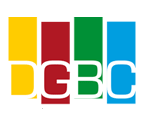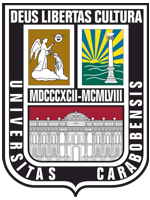The role of web applications in the development of multilingual competence in CLIL courses in higher education
DOI:
https://doi.org/10.46502/issn.1856-7576/2024.18.03.9Keywords:
digital learning, language competence, content-language integrated learning, pedagogical technologies.Abstract
The purpose of the work is to determine the role of web technologies to ensure the formation of multilingual competence within the CLIL approach. For this purpose, a survey was conducted among students of various specialties, however, with a special emphasis on students of technical universities. The survey was conducted among 58 students. Questionnaires were used, including questions about the use of web applications in various forms of education. The results of the survey showed the high efficiency of using web applications in CLIL courses for the formation of both language competence and subject knowledge. The CLIL method combined with modern web applications proved to be an effective tool in the students' learning process. The implementation of the program of this approach allows not only the problem of educational overload, but also the strengthening of the general development of students, including their language skills. In the conclusions, it is noted that for the successful implementation of the CLIL program, it is necessary to provide students with essential terms and to acquire a foreign language and the availability of trained teaching staff.
References
Burns, L. V. F., & García, M. R. (2024). Preservice teachers' social projects for digitalized bilingual classrooms. In Interdisciplinary Research and Innovation in Bilingual and Second Language Teacher Education (pp. 90-119). Routledge. https://doi.org/10.4324/9781003350217-8
Byrko, N., Tolchieva, H., Babiak, O., Zamsha, A., Fedorenko, O., & Adamiuk, N. (2022). Training of teachers for the implementation of universal design in educational activities. AD ALTA: Journal of Interdisciplinary Research, Special Issue 12, 117-125. https://www.magnanimitas.cz/ADALTA/120228/papers/A_22.pdf
Cinganotto, L. (2016). CLIL in Italy: a general overview. Latin American Journal of Content & Language Integrated Learning, 9(2), 374-400. https://doi.org/10.5294/laclil.2016.9.2.6
Compagnoni, I. (2023). The impact of a post-pandemic educational technology training on usability and acceptance by teachers of italian as a foreign language. Italiano LinguaDue, 14(2). https://doi.org/10.54103/2037-3597/19623
Denman, J., Schooten, E. V., & de Graaff, R. (2022). Inclusive CLIL. AILA Review, 35(2), 321-350. https://doi.org/10.1075/aila.22020.den
Frumkina, A., Diachenko, M., Polyezhayev, Y., Savina, N., & Hadi, F. (2020). Readiness of future teachers for integrated teaching of educational subjects in foreign language. Práxis Educacional, 16(38), 502-514. https://doi.org/10.22481/praxisedu.v16i38.6023
Geoghegan, L. (2024). Language learning motivation in multilingual CLIL. Porta Linguarum Revista Interuniversitaria de Didáctica de las Lenguas Extranjeras, (41), 137-151. https://doi.org/10.30827/portalin.vi41.26620
Gierlinger, E. M. (2017). Teaching CLIL? Journal of Immersion and Content-Based Language Education, 5(2), 187-213. https://doi.org/10.1075/jicb.5.2.02gie
Hemmi, C., & Banegas, D. L. (2021). CLIL: An Overview. In International Perspectives on CLIL (pp. 1–20). Springer International Publishing. https://doi.org/10.1007/978-3-030-70095-9_1
Hubina, S. (2017). Teaching activities self regulation by means of art therapy. Science and Education, 11, 114-119. http://scienceandeducation.pdpu.edu.ua/uk/articles/2017-11-doc/2017-11-st15
Iastremska, O., Tryfonova, O., Mantaliuk, O., & Baranets, H. (2023). The impact of strategic decisions on the future development of organisations and economic dynamics. Futurity Economics&Law, 3(4), 117-134. https://doi.org/10.57125/FEL.2023.12.25.08
Jiang, L., Li, Z., & Leung, J. S. C. (2024). Digital multimodal composing as translanguaging assessment in CLIL classrooms. Learning and Instruction, 92, 101900. https://doi.org/10.1016/j.learninstruc.2024.101900
Khoiriyah, K. (2021). Content and Language Integrated Learning (CLIL) in Indonesian Context: an Overview. Journal of Progressive Education, 11(3), 587-601. https://doi.org/10.23960/jpp.v11.i3.202110
Martínez Agudo, J. de. D. (2019). The impact of CLIL on English language competence in a monolingual context: a longitudinal perspective. The Language Learning Journal, 48(1), 36-47. https://doi.org/10.1080/09571736.2019.1610030
Nawrot-Lis, B. (2021). Language in CLIL settings: research overview. Linguistics, 1(14), 223-235. https://doi.org/10.25312/2391-5137.14/2020_14bnl
Papaja, K. (2024). Preliminary Material. In A Reflective CLIL Teacher: A Way to Enrich the CLIL Teaching Professional Practice in the Polish Context. BRILL. https://doi.org/10.1163/9789004548152_001
Patiño-Santos, A., & Poveda, D. (2022). Bilingual education. In Global CLIL (pp. 149-173). Routledge. https://doi.org/10.4324/9781003147374-9
Paulsrud, B. (2018). Mapping CLIL in Sweden. In L. K. Sylvén (Ed.), Investigating Content and Language Integrated Learning (pp. 19-34). Multilingual Matters. https://doi.org/10.21832/9781788922425-005
Pérez Cañado, M. L. (2018). CLIL and Educational Level: A Longitudinal Study on the Impact of CLIL on Language Outcomes. Porta Linguarum Revista Interuniversitaria de Didáctica de las Lenguas Extranjeras, 29, 51-70. https://doi.org/10.30827/digibug.54022
Phuong, Y. H., & Thi Nguyen, L. G. (2022). English Teachers’ Questions in A Vietnamese High School Reading Classroom. JEELS (Journal of English Education and Linguistics Studies), 4(2), 129-154. https://doi.org/10.30762/jeels.v4i2.63
Popadynets, O., & Staryk, O. (2022). From English for specific purposes (ESP) to content and-language integrated learning (CLIL): to the problem of providing continuous foreign language education. Humanities science current issues, 3(47), 301-305. https://doi.org/10.24919/2308-4863/47-3-49
Rudenko, O., & Kharkov, S. (2023). Philosophical studies of the future in the context of postmodern knowledge: theory, methodology. Futurity Philosophy, 2(3), 4-16. https://doi.org/10.57125/FP.2023.09.30.01
San Isidro, X., & Lasagabaster, D. (2020). Students’ and families’ attitudes and motivations to language learning and CLIL: a longitudinal study. The Language Learning Journal, 50(1), 119-134. https://doi.org/10.1080/09571736.2020.1724185
Shevchenko, Y., & Dubiaha, S. (2022). The impact of inclusive practices on academic performance in primary school. AD ALTA: Journal of Interdisciplinary Research, 12(2), 124-127. http://eprints.mdpu.org.ua/id/eprint/12714/1/124-127.pdf
Smala, S. (2022). Situated emergence of CLIL. In Global CLIL (pp. 52–73). Routledge. https://doi.org/10.4324/9781003147374-4
Snizhko, N. (2023) Implementation of bilingual education in Ukrainian institutions of higher education. Viae Educationis: Studies of Education and Didactics, 2(3), 35-39. https://cejsh.icm.edu.pl/cejsh/element/bwmeta1.element.ojs-doi-10_15804_ve_2023_03_04
Stepanenko, O., Ohrimenko, Z., Shaforost, Y., Pasichnyk, L., & Pochynok, Y. (2022). Positive learning environment in educational sphere. Revista Eduweb, 16(2), 30-48. https://doi.org/10.46502/issn.1856-7576/2022.16.02.2
Turchyn, I., Zaitseva, S., Rudenko, N., Saienko, V., Kuzemko, N., & Denefil, O. (2023). Using distance learning models as opportunities for blended learning for foreigners. Romanian Magazine for Multidimensional Education, 15(4), 178-191. https://www.doi.org/10.18662/rrem/15.4/787
Verikaitė-Gaigalienė, D., & Andziulienė, L. (2019). To Be Or Not to Be: An Overview of Clil Implementation in Lithuania. Sustainable Multilingualism, 14(1), 123-135. https://doi.org/10.2478/sm-2019-0006
Yevtushenko, N. (2021). Content-language integrated learning (clil) in the training of students of technical specialties. Young Scientist, 10.1(98.1), 45-48. https://doi.org/10.32839/2304-5809/2021-98.1-11
Zaitsev, S. (2023). Using Digital Tools to Increase the Competitiveness of Small Businesses (Experience of Full-Service Bakeries). Futurity of Social Sciences, 1(4), 75-90. https://doi.org/10.57125/FS.2023.12.20.05
Published
How to Cite
Issue
Section
License
Copyright (c) 2024 Yuriy Polyezhayev, Liubov Terletska, Alla Kulichenko, Lolita Vorobiova, Nataliia Snizhko

This work is licensed under a Creative Commons Attribution 4.0 International License.














